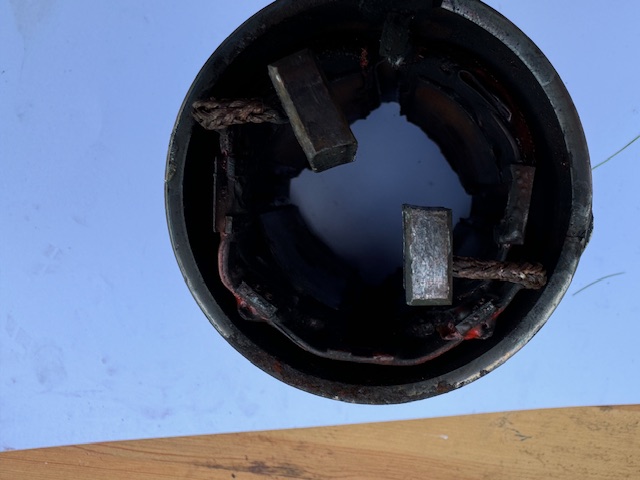Here’s what I’ve learned during a recent hiatus.
Issue: Tried to start, but just a loud-ish ‘Click’.
Proposed solution: A replacement starter motor. Mine is a Spanish Bosch starter.
So, I looked at the Gutsibits web site - it’s my first point of call for pretty well anything. I also looked inDave Richardson’s ‘Guzziology’, which again, I try always to do.
Dave Richardson seems to think that the bike shouldn’t be fussy…
Gutsibits has what seems a bewildering array of options:
- Used starter motor (seems to fit almost everything!)
- Starter motor brush sets (i.e. DIY re-build)
- Replacement solenoid (as mine clicks loudly, I presumed it was working)
- Brand new ‘budget’ starter and solenoid
- Reconditioned Bosch starter & solenoid (exchange only)
- New Valeo starter motor and solenouid
- Reconditioned Valeo starter and solenoid (exchange only)
- Used Valeo starter and solenoid
Costs for the complete start varied from £60-90 to £231. Lowest in price is the used Bosch, and most expensive is a brand new Valeo unit.
So, I visited eBay and took a look there. I found, for £50(!), a new model, listed as suitable for a California. On examination, it looked exactly the same is the ‘budget’ starter available from Gutsibits. So, I ordered it. It’s quite a bit smaller than the old Bosch one, but the solenoid is larger.
On fitting, I noted that it’s a very tight fit. The solenoid cover interferes with the head of the left hand mouinting bolt for the neutral switch (to be fair, the Gutsibits information hints that it’s a tight fit, warning that “You may need to fit hex headed neutral switch bolts on some pre 1990 models to make room for the solenoid”. I had to fit a slimmer washer, and also grind away a part of the bolt head (mine were already hex headed). But it’s all okay, and the bike starts nicely.
So - a sucker for punishment, I found two Web descriptions of starter motor overhaul. One by Greg Bender, the other on the Wild Guzzi forum. So, I took the old starter apart, cleaned everything (plenty of brushes still present) and re-assembled it. Filthy job, and it didn’t work, even afterwards. I’d thought the rotor was seized (and it did seem to be) but on refitment, it still didn’t work. Oh, well. At least I got to see how it was made.
Oh yes - one wrinkle. Don’t forget that the starter is connected directly to the battery positive terminal. So, do remember to disconnect the battery earth before attempting to remove this lead. If you don’t, there will be sparks! I know…
That’s all for this - the super-budget starter seems ok to me. We’ll see how well it survives the weather…
Nick





